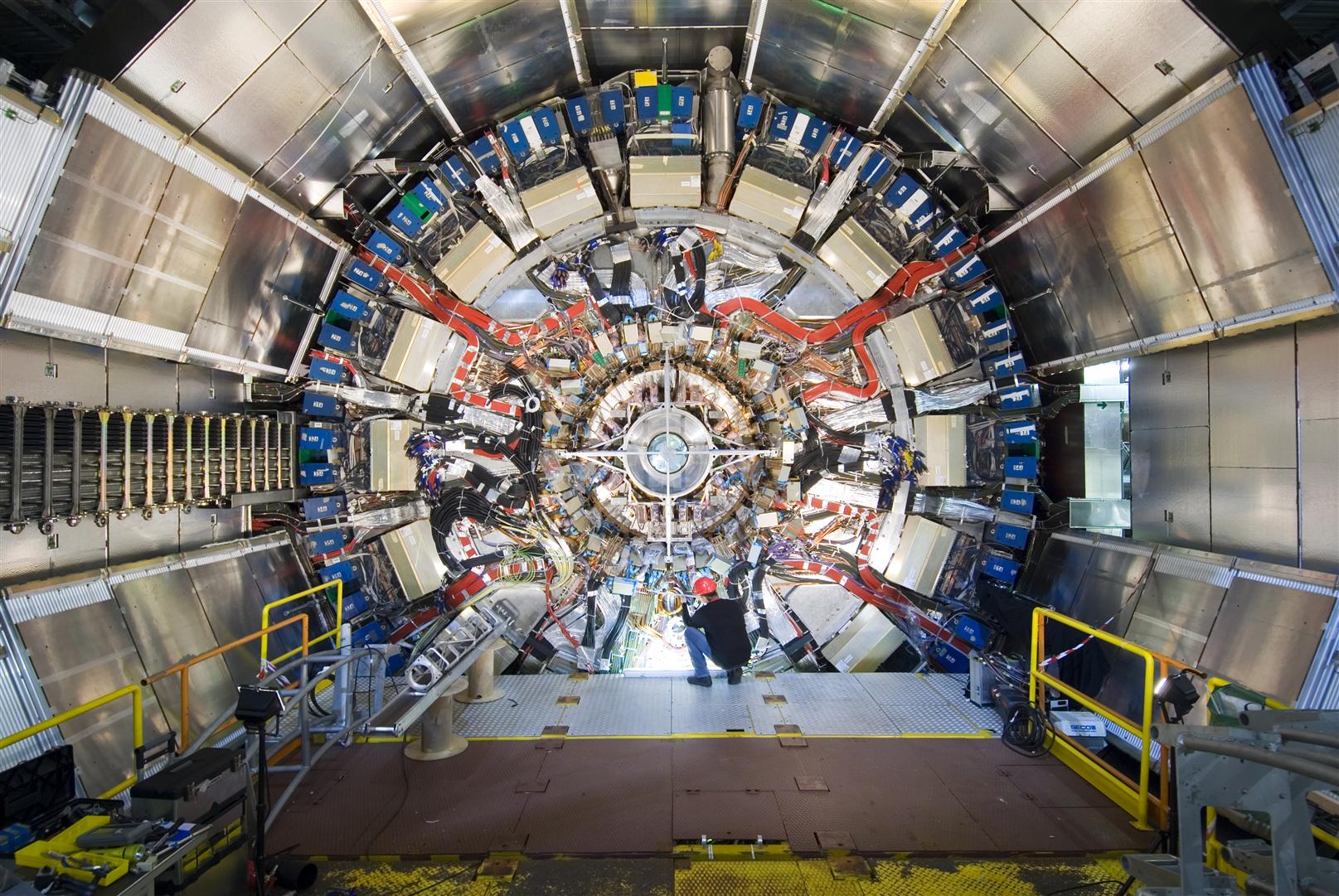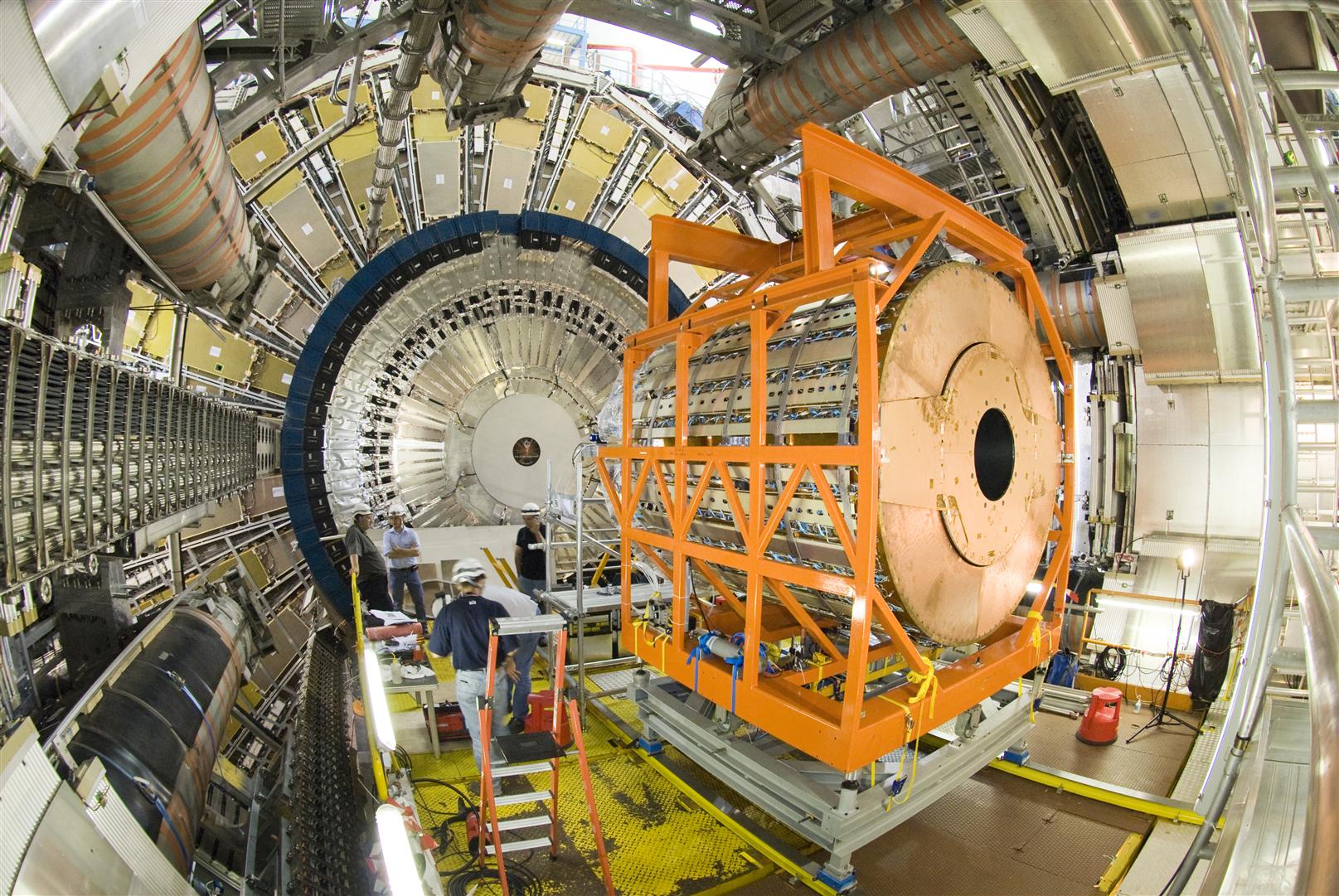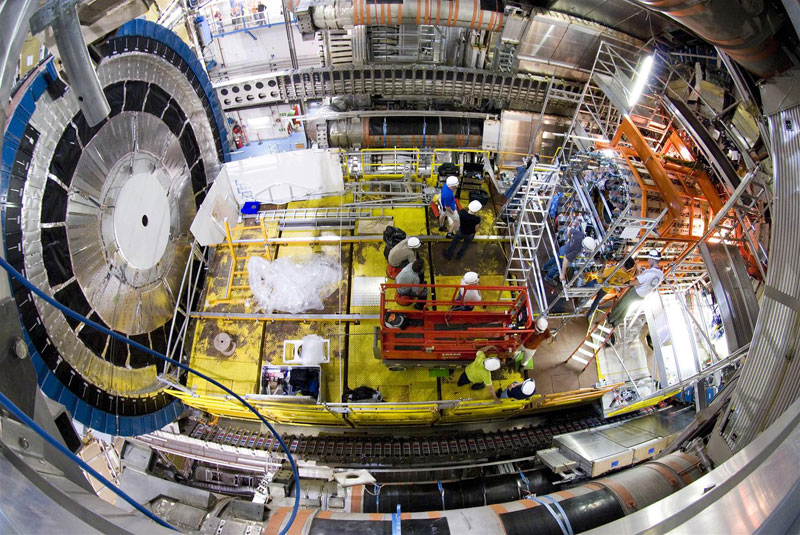
The Inner Detector
- Discover
- Detector
- The Inner Detector
It is the first part of ATLAS to see the decay products of the collisions
It is very compact and highly sensitive. It consists of three different systems of sensors all immersed in a magnetic field parallel to the beam axis. The Inner Detector measures the direction, momentum, and charge of electrically-charged particles produced in each proton-proton collision.
The main components of the Inner Detector are: Pixel Detector, Semiconductor Tracker (SCT), and Transition Radiation Tracker (TRT).
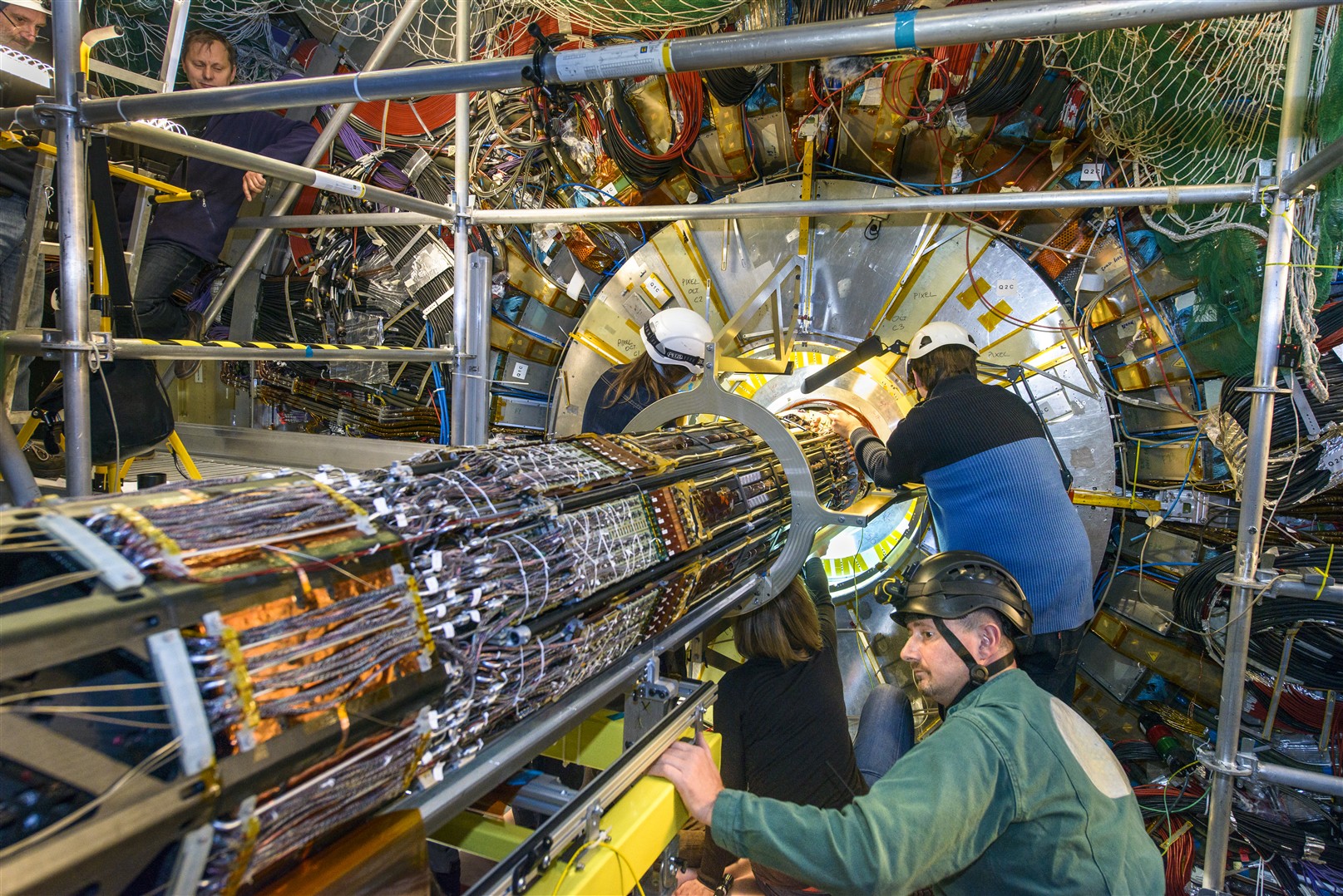
Pixel Detector
- 92 million pixels (92 million electronic channels).
- Silicon area approx. 1.9m2. 15 kW power consumption
- Pixel size 50 x 400μm2 for the external layers and 50 x 250 μm2 for the innermost layer (IBL)
- 4-barrel layers with 1736 sensor modules
- 3 disks in each end-cap with 288 modules
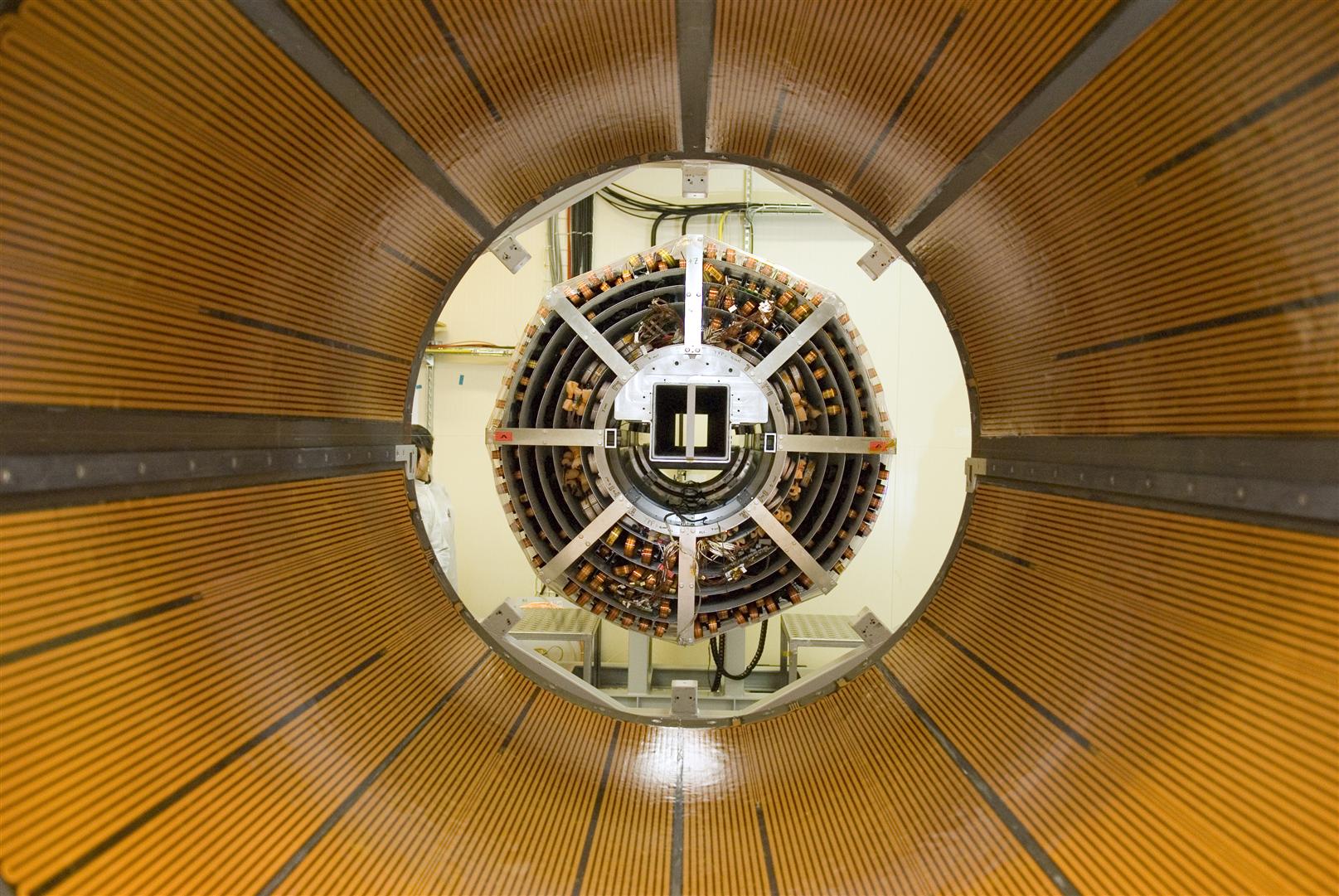
Semiconductor Tracker
- A silicon microstrip tracker consisting of 4,088 two-sided modules and over 6 million implanted readout strips (6 million channels)
- 60m2 of silicon distributed over 4 cylindrical barrel layers and 18 planar endcap discs
- Readout strips every 80μm on the silicon, allowing the positions of charged particles to be recorded to an accuracy of 17μm per layer (in the direction transverse to the strips)
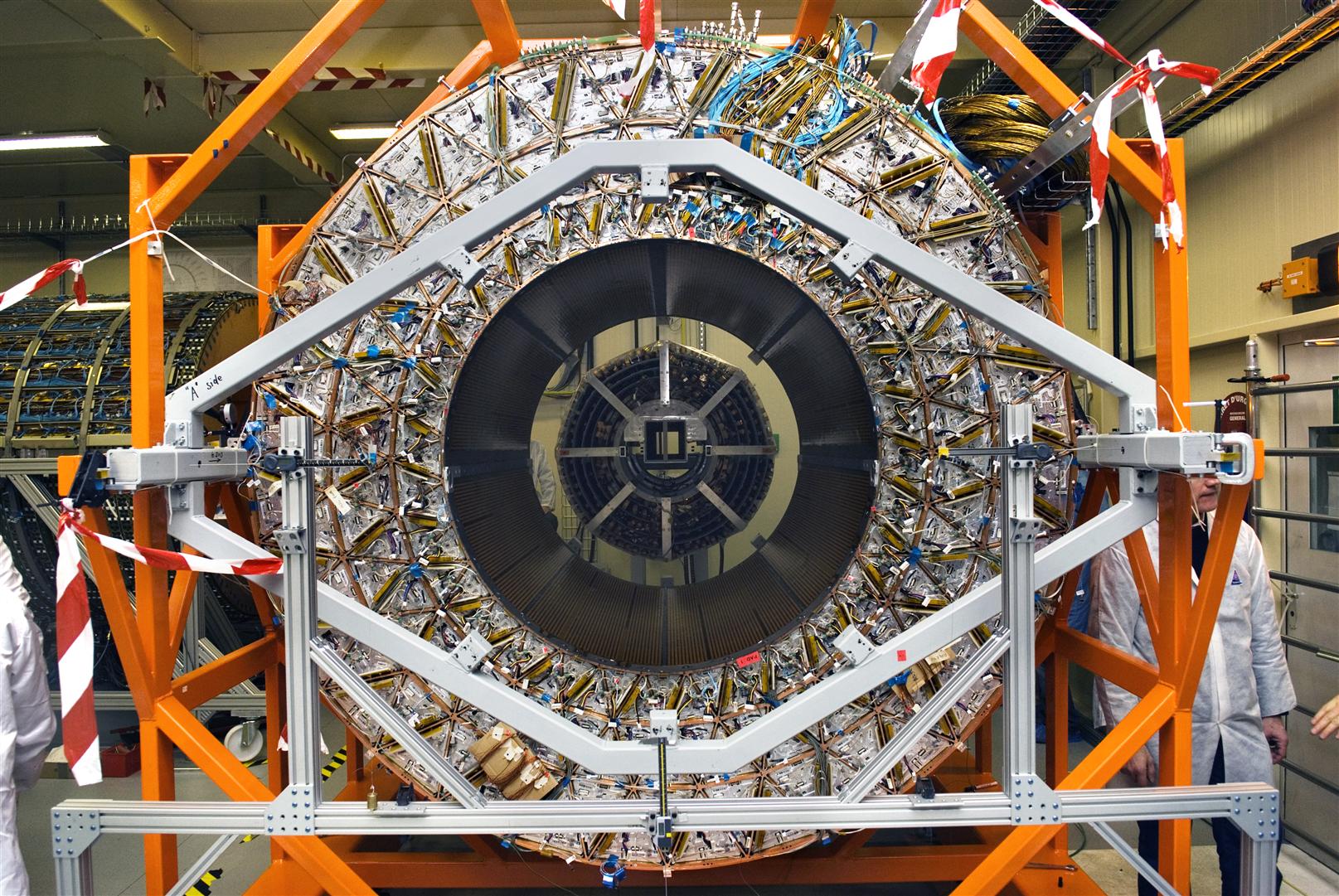
Transition Radiation Tracker
- 350,000 read-out channels
- Volume 12m3
- Basic detector element: straw tube with 4mm diameter, in the centre a 0.03mm diameter gold-plated tungsten wire
- 50,000 straws in Barrel, each straw 144 cm long. The ends of a straw are read out separately
- 250,000 straws in both endcaps, each straw 39 cm long
- Precision measurement of 0.17 mm (particle track to wire)
- Provides additional information on the particle type that flew through the detector, i.e. if it is an electron or pion
More
